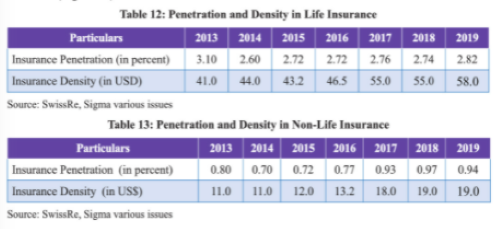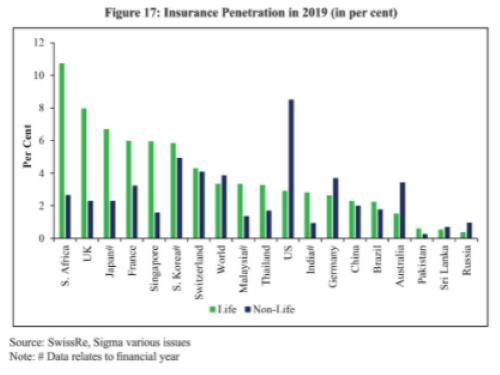
Insurtech has come a long way from the initial innovation in insurance involving wearable and portals. Insurtech players are now adopting newer technologies and concepts. These include technologies that support insurance product innovations such as microinsurance, usage-based insurance and peer-to peer insurance. They use machine learning, robo-advisory and the internet of things (IOT) for designing and selling products, underwriting, claim settlements etc. This warrants specific regulations that are still evolving.
In the second phase of the regulatory evolution, sandbox regulation gave a boost to insurtech that resulted in illustratively innovative products with lower acquisition cost for the insurance companies. Sandbox regulation is the live testing of a new product and service offerings in controlled environments.
On September 18 2018, the Insurance Regulatory and Development Authority of India set up a committee on regulatory sandbox in the insurance sector. A regulatory sandbox helps create a safe space to experiment with fintech solutions where the consequences of failure can be controlled. The objective of a regulatory sandbox is to facilitate innovations in the insurance sector, making insurance products more relevant, and to give a fillip to insurance penetration.
READ I Insurtech in India: Wearables trigger regulatory evolution

Insurtech sandbox committee recommendations
On February 5 2019, the committee on regulatory sandbox in the insurance sector released its report. Based on the comments, inputs and advices received, the committee drafted the final report on the regulatory sandbox. It made the following recommendations:
- The regulatory sandbox will foster the growth of innovative companies to provide insurtech and the fintech sector with the flexibility to deal with regulatory requirements without ignoring policyholder protection.
- The IRDA should set up a core sandbox committee to monitor and supervise digital innovation and to support and advise applicants as suggested by the draft guidelines. The committee will facilitate the experiments and provide the ecosystem needed for the experiments.
- The sandbox should define entry and eligibility criteria, boundary conditions, process flow, timelines, success factors and exit parameters for applicants, as well as appropriate controls for protection and risk management.
- The process and criteria should be flexible to offer a conducive environment for encouraging and enabling a wide variety of experiments, including provisions for no enforcement action orders, waivers and relaxed reporting requirements.
- The committee suggests a cohort basis approach to receive applications. Applications can be accepted from insurers, insurance intermediaries or any other entity that has had a minimum net worth of Rs 25 lakh in the last three years.
- The applications can be in any one or more of the 5 categories — insurance solicitation and distribution, insurance products, underwriting, policy and claims servicing or any other. The applicants can apply individually or in a partnership in more than one category. In the case of insurance products or underwriting, the applicant must partner with an insurer.
- Permission for the experiments will be for six months and can be extended for another six months. The proposal cannot be given more than 12 months. A proposal that covers 5,000 persons or completes Rs 50 lakh premium will be considered complete.
- The committee calls for strict requirements around the confidentiality of policyholder data.
READ I TechFins: Why India must stop their unregulated, untaxed run

The IRDA notified the IRDAI (regulatory sandbox) Regulations on July 26 2019 to give a fillip to insurance penetration and to facilitate innovations, especially those triggered by technology. The regulations were valid for a period of two years from the date of publication. The IRDA invited applications for the first cohort from September 15 to October 14 2019.
The authority received 173 applications on areas such as wellness, wearables, group insurance, usage-based insurance, loyalty / rewards programmes, electronic platforms, KYC onboarding, distribution and products. The authority approved 67 applications in three tranches. The last of the approvals granted were valid till December 31, 2020. So far, 19 applications have been granted an extension as they could not complete the experiment due to the Covid-19 pandemic.
The IRDA announced the second cohort of the regulatory sandbox for a month from September 15 2020. The authority received 185 applications in the second cohort. Most of the proposals could not be completed within a period of six months due to Covid-19 and were given six months extension. The validity of the regulatory sandbox regulations expired on July 25 2021. Some of the proposals belonging to the first cohort were not completed by then. In addition, the proposals of the second cohort were not completed by July 25, 2021. This led to the extension of experiments by two years.
There are a number of areas that need greater regulatory discussion as the transparency of technology and the impact on policyholder’s choice and rights may not be clear. Data protection and treatment of algorithms need to be discussed to ensure that the assumptions built in are appropriate. There may have implications on the monitoring of the operational risk and internal control of insurers. It is important to ensure that policyholders are fairly treated and appropriately protected when the implications of certain innovations and technologies are uncertain.
(Bahroze Kamdin is Partner and Hasmukh Rawal Director with Deloitte.)

